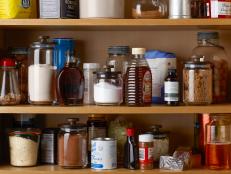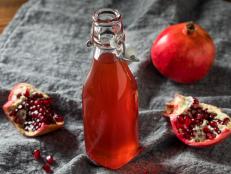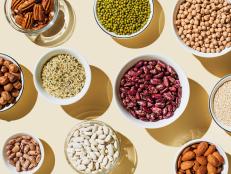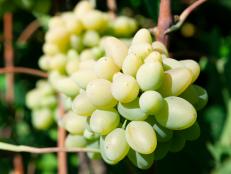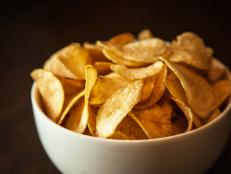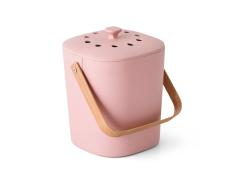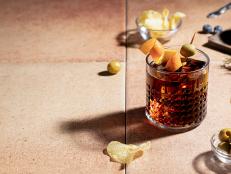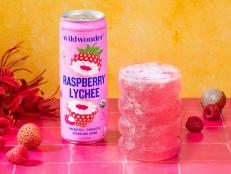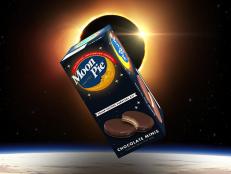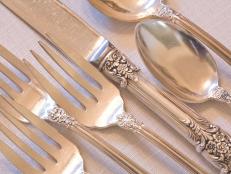Baking Ingredient Guide
Baking relies on the chemistry of carefully considered and properly measured ingredients to create culinary magic: light-as-air biscuits, chewy cookies, flaky crusts and moist cakes. Besides good measuring spoons, the key to baking success is fresh, good-quality ingredients. With this guide, you'll be ready to stock your pantry and bake like a pro.
Flour
All-Purpose Flour: This basic flour can be used in most baked goods. It's best to store flour in a tightly sealed canister. It should be good for about eight months in the cupboard and about one year refrigerated.
Cake or Pastry Flour: This finely ground soft-wheat flour is high in starch and low in protein, and is used for baking tender cakes and pastries. Store in the original bag in the pantry for up to eight months.
Bread Flour: This flour is higher in protein (gluten), so it gives body to bread and pizza dough. Store in the pantry for up to eight months.
Self-Rising Flour: This is all-purpose flour to which baking powder and salt have been added. Don't substitute it for other flours because the added ingredients might affect your recipe outcome — only use it if the recipe calls for it. It's best to keep this in the original box, tightly wrapped; keep in mind the shelf-life is only about six months.
Whole-Wheat Flour: This flour contributes a fuller flavor as it still contains the wheat germ. If you want to add whole-wheat flour to a recipe, substitute up to half of the all-purpose flour with whole wheat; any more than that and your baked good might be too tough. Store whole-wheat flour in the freezer — it contains fat from the wheat germ and can become rancid at room temperature. Whole-wheat flour is good for about six months in the freezer and only a couple of months if stored at room temperature.
Sugar
Granulated Sugar: Plain white sugar, this is refined from sugar cane or beets and is used in most baked goods. When stored properly in a tightly covered canister, it will last years.
Superfine Sugar: Since it is more finely granulated than table sugar, it dissolves almost instantly and is useful for meringues and cool liquids.
Confectioners' Sugar: Also called 10X, this is granulated sugar that has been ground into a powder. Confectioners' sugar is commonly used in cake and cookie icings and is often dusted on desserts. It's best to store it in the original box.
Brown Sugar, Light or Dark: This soft-textured, hearty-tasting sugar is white sugar flavored with molasses. Light and dark are interchangeable; it is a matter of taste. Keep it very well wrapped in the original packaging. If the sugar hardens, leave a slice of apple in the bag for a few hours or overnight.
Decorating or Coarse Sugar: The granules are about four times larger than granulated sugar and come in a myriad of colors. This is best used for decorating.
Molasses: This dark viscous syrup is the liquid that is left behind from refining sugar. Light molasses is from the first boiling of the sugar syrup; dark is from the second; and blackstrap, the strongest, is from the third and not usually used in desserts. If you have a choice of sulphured or unsulphured molasses, keep in mind that unsulphured usually has a cleaner flavor. Molasses can be stored in the pantry, but make sure you wipe the bottle well after using to prevent stickiness and pests.
Honey: For baking purposes, select a light-colored honey for a more delicate flavor. Store tightly sealed in a cool dry place for up to one year. If the honey crystallizes, microwave it for about 30 seconds or melt it in the jar in a pan of hot water over low heat.
Maple Syrup: Make sure you buy pure maple syrup, not pancake or table syrup. Store opened maple syrup in the refrigerator.
Leavener
Baking Soda: Also known as bicarbonate of soda, baking soda is used as a leavener to make dough and batter rise. Make sure yours if fresh. Baking soda has a shelf life of only six months once opened.
Baking Powder: This leavener is composed of baking soda, an acid (usually cream of tartar) and a moisture absorber, like cornstarch. Check the date on the bottom of the container before purchasing to make sure it hasn't expired, and once you open it, it will be effective for about six months. You can check to see if your baking powder is still active by stirring 1 teaspoon into 1/3 cup of warm water. If it still fizzes, it's okay.
Chocolate
Unsweetened Chocolate: This is also called baking or bitter chocolate, and is convenient when bought in one-ounce squares. Store this chocolate securely wrapped, away from sunlight and dampness, for up to three years.
Dark Chocolate: Dark chocolate can be labeled bittersweet or semisweet. Bittersweet chocolate is less sweet than semisweet, but can often be used interchangeably when baking. Store this chocolate securely wrapped, away from sunlight and dampness, for up to three years.
Milk Chocolate: This is dark chocolate with milk solids added, making it creamier and mellower. Store this chocolate securely wrapped, away from sunlight and dampness, for four to six months.
White Chocolate: This is technically not chocolate since there is no chocolate liquor, but it does contain cocoa butter along with sugar, vanilla and lecithin. Store white chocolate securely wrapped, away from sunlight and dampness, for four to six months.
Chocolate Chips: These contain less cocoa butter than chocolate bars, which is why they can retain their shape. It's best to use these where you want the chocolate-chip shape and use chocolate bars for melting. Store tightly wrapped.
Unsweetened Cocoa Powder: Natural cocoa powder has a deep chocolate flavor. Dutch-process cocoa powder has been treated with an alkali, which neutralizes its acidity and makes it mellower. Recipes are often written for one type or the other, as they react differently with baking powder. Dutch process is always labeled on the box; if there is no mention, it is natural. Store it in a tightly sealed container for up to two years.
Ground Chocolate: This is a blend of cocoa, chocolate, sugar and vanilla, and is occasionally used in recipes. It can easily be mistaken for cocoa in the store or your cupboard, but it gives very different results.
More Ingredient Tips
Butter: Recipes are written for unsalted butter. If you only have salted in the house, omit any salt that might be in the recipe.
Cream: Heavy cream will whip better than ultra-pasteurized cream, but is more perishable.
Eggs: Recipes are written for large eggs, unless otherwise noted.
Vanilla Extract: For the best flavor, use pure vanilla extract, but artificial can be used in a pinch.
Salt: Use a fine-grain salt, not kosher or coarse, for baking. Store it tightly sealed, away from dampness.






















